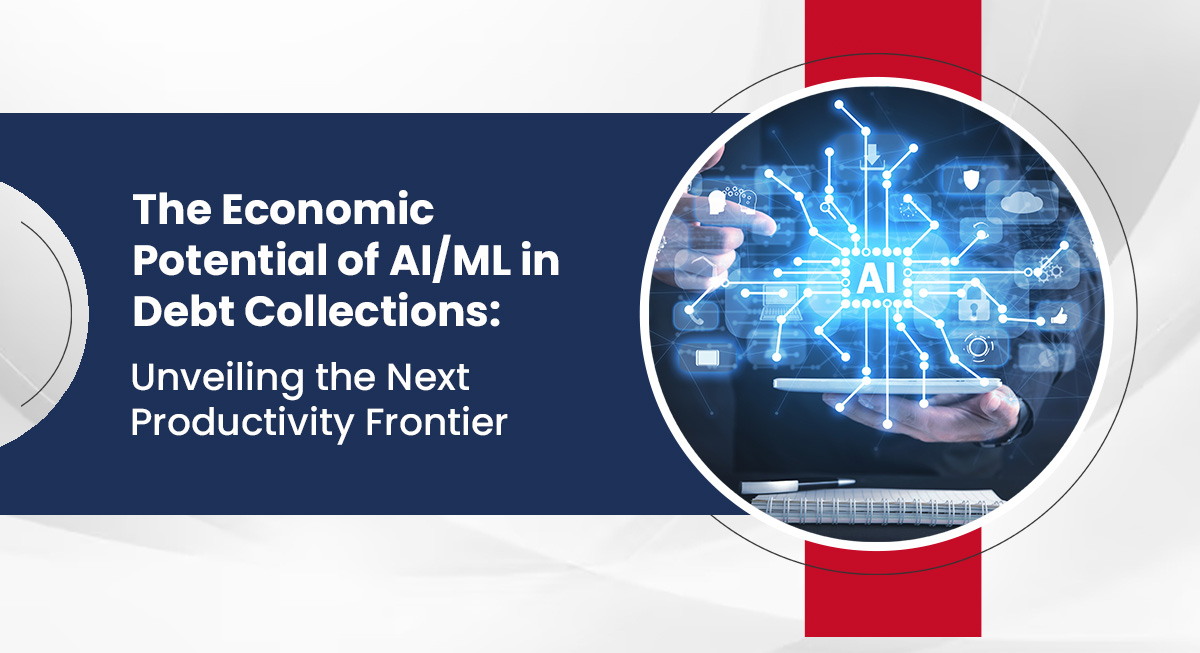The Economic Potential of AI/ML in Debt Collections: Unveiling the Next Productivity Frontier

The Economic Potential of AI/ML in Debt Collections: Unveiling the Next Productivity Frontier

Introduction
In recent years, the financial landscape has been rapidly evolving, and technology is at the forefront of this evolution. The integration of Artificial Intelligence (AI) and Machine Learning (ML) technologies has emerged as a promising frontier. These innovations have the potential to significantly impact debt collections, making operations more efficient, cost-effective, and customer-centric. In this blog, we’ll delve into the economic promise that AI/ML holds in debt collections, envisioning a future where these technologies unlock non-linear productivity.
1. Crunching the Data Deluge
2. Crystal Ball of Debt Collections: Predictive Modelling
3. Tailored Approaches for Every Persona
4. Streamlining Operations: Automation and Efficiency
5. Navigating the Legal Maze: Regulatory Compliance
6. Detecting Red Flags: Fraud Detection and Risk Mitigation
7. A Human Touch, Amplified: Improved Customer Experience
Conclusion
The integration of AI and ML into debt collections is not just a vision of the future—it’s a reality reshaping the industry. The economic potential of these technologies is immense, promising increased efficiency, cost-effectiveness, and improved customer relations. In this age of rapid technological advancement, embracing AI/ML in debt collections is an investment worth making to achieve sustainable growth and competitiveness in the financial sector.
Read Next
How does your debt collection strategy stack up against your competitors?
In the dynamic realm of debt collections, precise measurement of success isn't just valuable – it's an absolute necessity for lending institutions and their esteemed partners. Within this intricate terrain, debt collection platforms emerge as the lin
